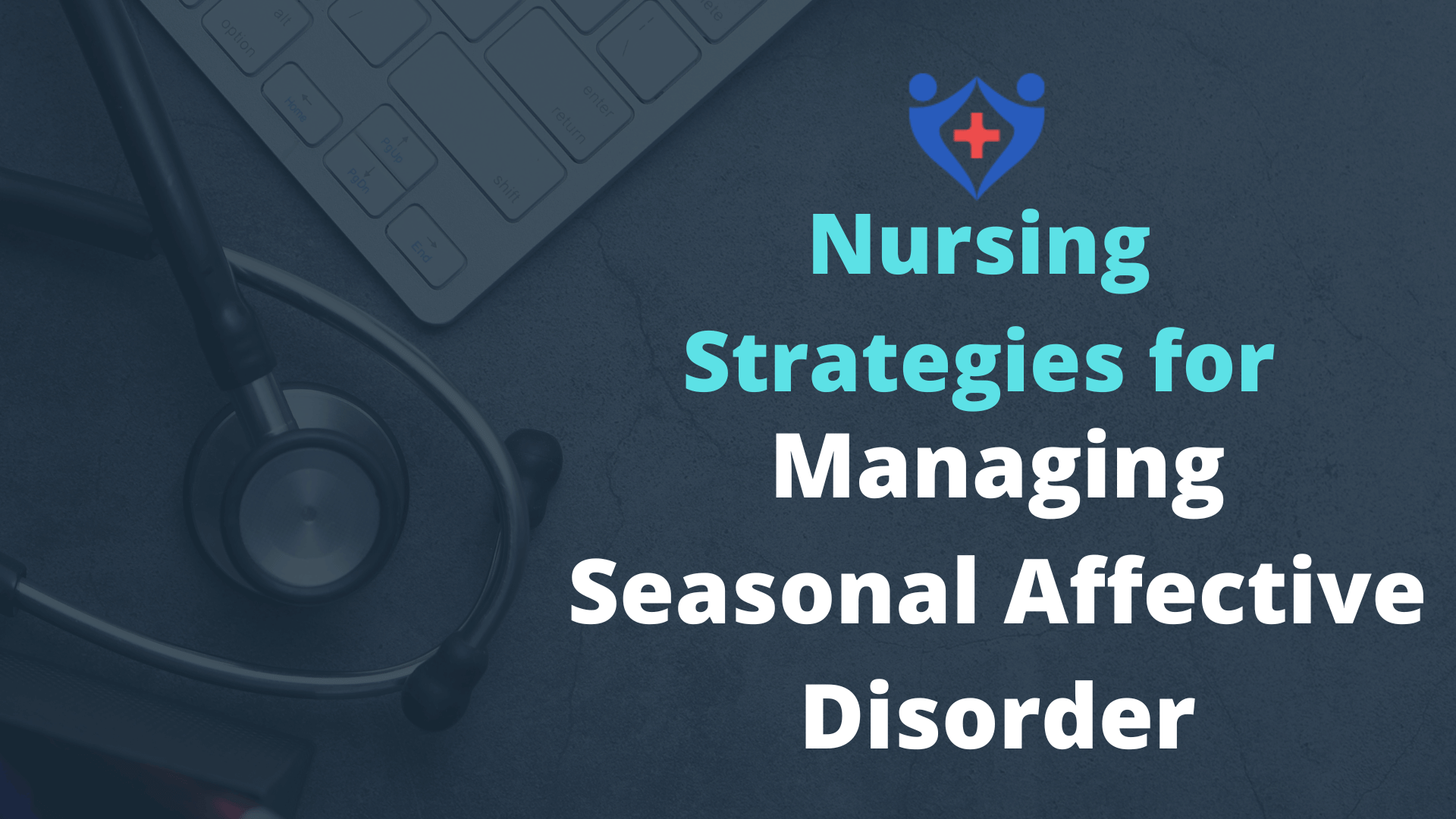Seasonal Affective Disorder (SAD) is a subtype of depression that typically occurs and recedes with seasonal changes, most commonly during the fall and winter months when daylight hours are shorter. As nurses play a crucial role in the holistic care of patients, understanding effective strategies to manage SAD is paramount. In this comprehensive guide, we’ll delve into nursing strategies aimed at mitigating the impact of Seasonal Affective Disorder, ensuring patients receive optimal care and support.
Understanding Seasonal Affective Disorder
Before delving into nursing strategies, it’s essential to grasp the fundamentals of Seasonal Affective Disorder. SAD is characterized by symptoms such as low mood, lethargy, changes in appetite, sleep disturbances, and a loss of interest in usual activities. These symptoms can significantly impact an individual’s quality of life and functioning, making effective management imperative.
Table: Comparison of Nursing Strategies for Managing Seasonal Affective Disorder
| Nursing Strategy | Description |
|---|---|
| Light Therapy | Involves exposure to artificial light sources to regulate circadian rhythms and improve mood. |
| Pharmacological Interventions | Includes the administration of SSRIs to alleviate symptoms of SAD. |
| Psychotherapy and Counseling | Incorporates interventions such as CBT and support groups to address negative thought patterns and foster a sense of community. |
| Lifestyle Modifications | Focuses on promoting physical activity, healthy sleep hygiene, and nutritional support to enhance overall well-being. |
Nursing Assessment and Diagnosis
- Thorough Patient Assessment: Nurses should conduct comprehensive assessments to identify individuals at risk of SAD. This includes evaluating family history, previous episodes of depression, and seasonal patterns of mood changes.
- Utilization of Screening Tools: Implement validated screening tools such as the Seasonal Pattern Assessment Questionnaire (SPAQ) or the Hamilton Depression Rating Scale (HAM-D) to aid in the diagnosis of SAD.
Nursing Interventions for Seasonal Affective Disorder
- Light Therapy (Phototherapy)
- Explanation: Light therapy involves exposure to artificial light sources that mimic natural sunlight, effectively regulating circadian rhythms and improving mood.
- Nursing Role: Nurses should educate patients on the proper use of light therapy devices, including duration, intensity, and timing of sessions.
- Monitoring: Regular assessment of the patient’s response to light therapy and monitoring for any adverse effects is essential.
- Pharmacological Interventions
- Selective Serotonin Reuptake Inhibitors (SSRIs): Nurses collaborate with healthcare providers to administer SSRIs, which are commonly prescribed for the treatment of SAD.
- Monitoring and Education: Nurses monitor patients for medication adherence and potential side effects, providing education on the expected benefits and risks associated with pharmacotherapy.
- Psychotherapy and Counseling
- Cognitive Behavioral Therapy (CBT): Nurses may facilitate CBT sessions, which have been shown to be effective in managing SAD symptoms by addressing negative thought patterns and behaviors.
- Support Groups: Encourage patients to participate in support groups or peer-led interventions to foster a sense of community and validation.
- Lifestyle Modifications
- Encourage Physical Activity: Nurses promote regular exercise, which has been linked to improved mood and overall well-being.
- Healthy Sleep Hygiene: Educate patients on the importance of maintaining a consistent sleep schedule and implementing relaxation techniques to improve sleep quality.
- Nutritional Support: Provide guidance on nutritionally balanced diets rich in omega-3 fatty acids and vitamin D, which may help alleviate symptoms of SAD.
Conclusion
Nurses play a pivotal role in the management of Seasonal Affective Disorder, employing a multifaceted approach to address the unique needs of each patient. By implementing comprehensive nursing strategies, including light therapy, pharmacological interventions, psychotherapy, and lifestyle modifications, healthcare professionals can effectively mitigate the impact of SAD and improve patient outcomes. Through ongoing education, support, and collaboration with interdisciplinary teams, nurses continue to make significant contributions to mental health care, ensuring individuals receive the support and treatment they need to thrive.

